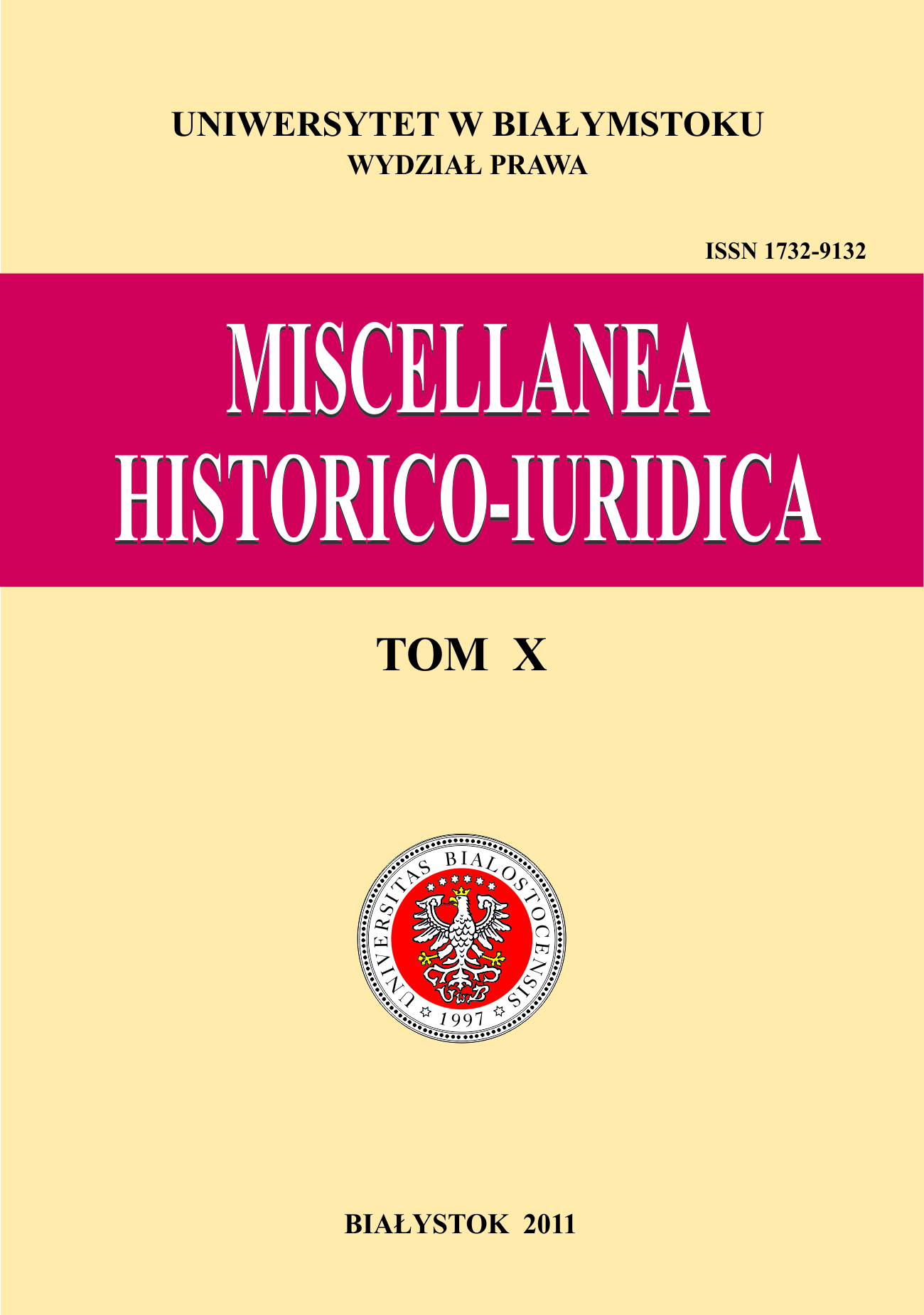Azyl w angielskim prawie karnym (XIII–XVI w.)
Keywords:
sanctuary, English criminal lawAbstract
The paper analyzes the privilege of sanctuary in English criminal law between the 13th and 16th centuries. The general privilege of sanctuary belonged to all churches, chapels and churchyards. Any felon who had taken sanctuary could remain there for forty days. During that time he had to declare to the coroner whether he would stand trial or abjure the realm. If he chose the latter, he then had to confess his guilt before the coroner, swear to leave the country and never return without the king’s license. He was assigned the nearest port from which he should leave the country. If, during this forty days privilege of sanctuary, or while he was en route to the seaside, he was arrested and arraigned, he might plead the privilege of sanctuary. The private sanctuaries, created by a grant either from the Pope or from the king, usually imposed no time limit and gave protection for life. The sanctuary, therefore, could be used as a convenient base for planning criminal activities. No doubt, the privilege of sanctuary was frequently abused. As a result, judges became more hostile to the plea of sanctuary and in 1534 the privilege was taken away from all traitors. Sanctuary and abjuration disappeared in the Tudor period. In 1624, it was enacted that no sanctuary or privilege of sanctuary be hereafter admitted or allowed in any case.







